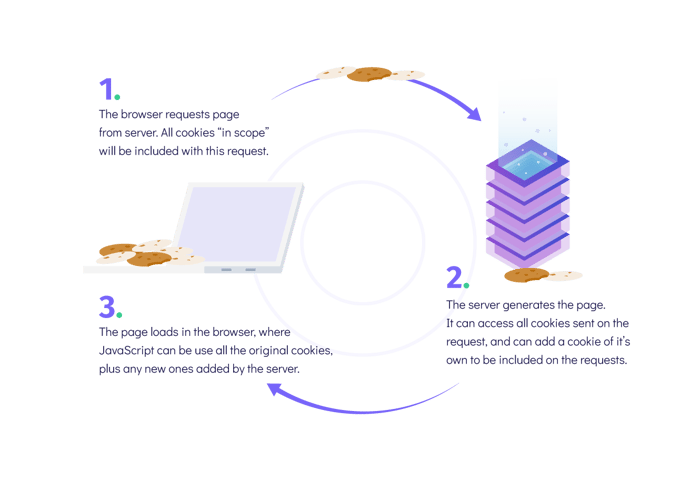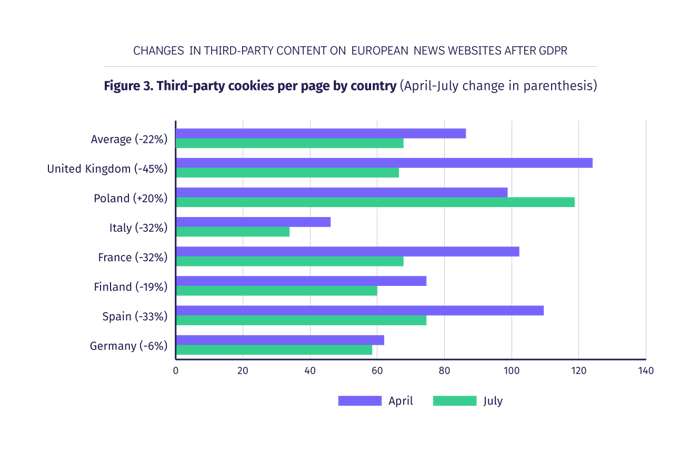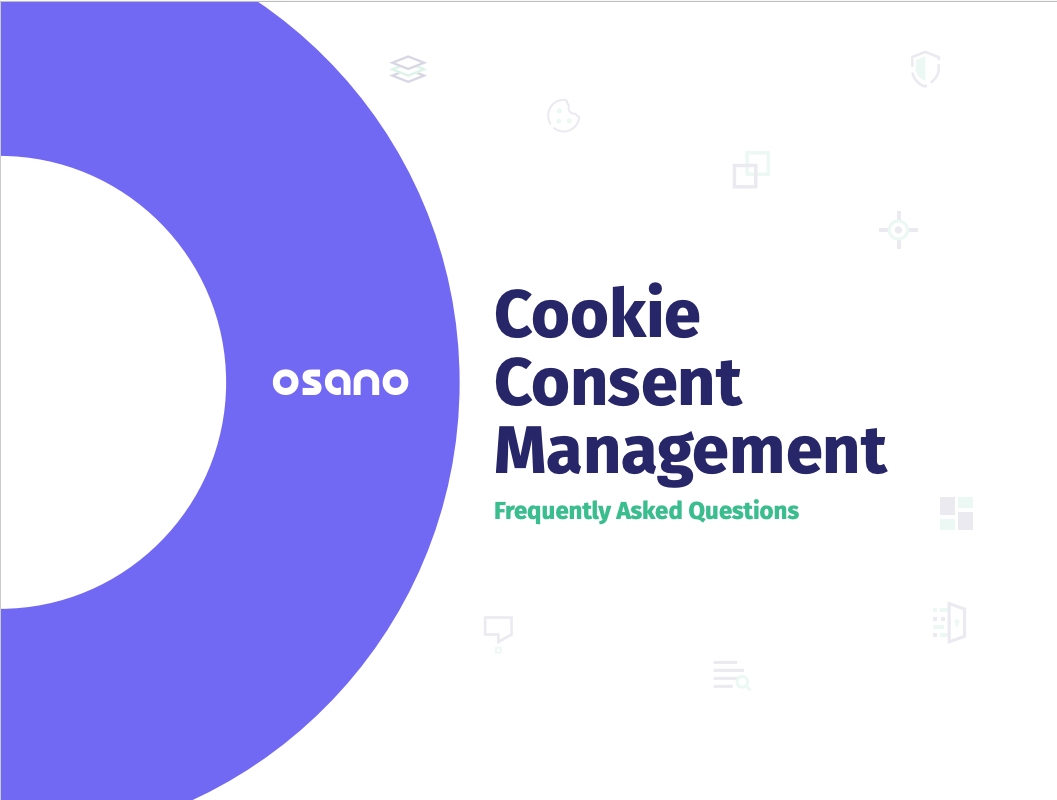
AI Risk Management Frameworks to Manage Risks in Artificial Intelligence Systems
In 2023, an Australian mayor was getting ready to take legal action...
Read NowGet an overview of the simple, all-in-one data privacy platform
Manage consent for data privacy laws in 50+ countries
Streamline and automate the DSAR workflow
Efficiently manage assessment workflows using custom or pre-built templates
Streamline consent, utilize non-cookie data, and enhance customer trust
Automate and visualize data store discovery and classification
Ensure your customers’ data is in good hands
Key Features & Integrations
Discover how Osano supports CPRA compliance
Learn about the CCPA and how Osano can help
Achieve compliance with one of the world’s most comprehensive data privacy laws
Key resources on all things data privacy
Expert insights on all things privacy
Key resources to further your data privacy education
Meet some of the 5,000+ leaders using Osano to transform their privacy programs
A guide to data privacy in the U.S.
What's the latest from Osano?
Data privacy is complex but you're not alone
Join our weekly newsletter with over 35,000 subscribers
Global experts share insights and compelling personal stories about the critical importance of data privacy
Osano CEO, Arlo Gilbert, covers the history of data privacy and how companies can start a privacy program
Upcoming webinars and in-person events designed for privacy professionals
The Osano story
Become an Osanian and help us build the future of privacy!
We’re eager to hear from you
Updated: July 24, 2023
Published: May 25, 2022

Though cookies play an essential role in website functionality, they’re still a mystery for many people — even for site owners who serve them. Cookies can cause big headaches for organizations that lack clarity on how to use them appropriately, exposing them to penalty fines and PR woes.
In terms of data privacy, cookies have become an integral part of the conversation. Today, site visitors and app users seek to control which cookies are saved to their devices and how websites use the data stored in those cookies. And it’s up to an organization to meet this demand — in this case, through a cookie policy.
But first…
A cookie is a small text file — sent by visited websites — to your computer through your browser. Its purpose is to extend a website's functionality and create a better user experience, usually through personalization, session management, and tracking. A cookie might save user inputs, shopping carts, login information, or wish lists. It can also be used for advertising and analytics.

A cookie is not a program; it doesn’t perform a function. It’s just text, which means you can open and read cookies using a basic word processor. The two most common types of cookies are first-party cookies and third-party cookies (though the latter might soon be phased out).
A first-party cookie is created by the website you’re currently visiting to save your preferences for that same website. For example, www.acme.com might put a cookie on your computer to save your last shopping cart on their site.
A third-party cookie is created by a different website than the one you’re visiting. For example, www.acme.com might put ads on its site through www.easyads.com. In this case, www.easyads.com creates a cookie and puts it on your browser even though you never visited their site. www.acme.com passes the cookie to your computer on behalf of www.easyads.com.
First-party cookies don’t often cause problems because they’re typically used to enhance the user experience. For example, when you visit Home Depot’s website, a cookie remembers your location so the website can offer local prices and promotions.
Most of the cookie controversy actually stems from how marketing and advertising uses them. The issue hinges on consent: Is it right to collect data on users and share it with other parties without their permission? The European Union, a few U.S. states, and other significant jurisdictions believe users should be aware of the cookies a website serves and be able to opt-in or opt-out of using them.
Advertising cookies are almost always third-party cookies. These collect and share user data through networks of websites, often without the user’s consent. These networks aggregate and sync countless data points. In the end, they know more about you than you expect.
Look at it like this: You visit three websites — A, B, and C. On website A, your activity signals that you want to buy running shoes. On website B, you do something that indicates you are likely male (i.e, you browse the men’s shoe section). On website C, you see an ad for men’s running shoes, even though you haven’t given that site any information yet. You wouldn’t expect website C to know this about you, but the cookies saved on your computer from other websites provide it with plenty of information.
Thus, over the last several years, cookie use has become sophisticated, and users have become uncomfortable. Remember the first time you browsed for something on Amazon, only to see an ad for it hours later on Facebook? It’s unsettling — and a clear sign that your web habits aren’t as anonymous as you thought.
Concerns like this boosted the demand for privacy tools like virtual private networks (VPNs) and ad blockers. Most web browsers have tools to clear cookies on a schedule and at will. In 2017, Apple’s Intelligent Tracking Prevention helped spearhead the industry’s response to user concerns about cookies. Seven years later, that response has expanded to the potential removal of third-party cookies altogether.
As the data privacy landscape evolves and more jurisdictions address concerns, cookies are almost always included in the narrative.
The General Data Protection Regulation (GDPR) and ePrivacy Directive (ePD) are the strongest examples of this. These EU laws treat cookies as “personal data,” making them subject to regulation. Any website that serves EU residents must collect consent from users before serving any non-essential cookies to the user’s device.
According to the Reuters Institute and the University of Oxford, third-party cookie use fell 22% on average immediately after the GDPR’s implementation in May 2018. Nevertheless, many websites still fail to comply with the GDPR due to ignorance or willful refusal.
Learn how to stay compliant with our Cookie Consent FAQ guide - Download here. Source: Reuters Institute
Source: Reuters Institute
The EU’s efforts, rolled out in 2018 to protect personal data, have since ignited a global trend that’s changing the data privacy landscape. Other jurisdictions have passed or are working on passing their own data privacy initiatives:
Cookies quickly pile up as you add services and features to your website. That live chat box is excellent for customer service, but it also serves its own cookie; the analytics tool you installed does, too. And that simple line of Javascript your ad broker gave you? That creates several cookies that dozens of services can access.
As you can imagine, it becomes difficult to track all of your site’s cookies. Nevertheless, you’re responsible for lawfully handling the personal data garnered from your visitors, even if third parties create the cookies used to collect that data. And that’s difficult if you’re not aware of all the cookies you serve to visitors.
The solution? Conducting a cookie audit. It’s a simple process that helps you:
Conducting a cookie audit involves three steps:
Your goal is to get a clear picture of your cookie profile. In later steps, you’ll investigate whether those cookies jeopardize your compliance and whether they’re listed in your privacy policy.
To manually check your website for cookies, clear your browser’s cookies, then revisit your site. Afterward, re-check your cookies to see what downloaded. However, there’s a limitation to this approach: Not all cookies download immediately. Some are delayed. Others only download when a user triggers a specific action. So you may not immediately see all the cookies your website serves.
The other method is conducting a privacy audit with a resource like Osano. Our privacy audit tool can identify the list of cookies passed to visitors from your website.
With cookie profile in hand, review each cookie to investigate its origin and purpose, especially if you’ve never seen it before. Look for cookies that could pose compliance issues with applicable data privacy laws. Consider the following questions about each cookie:
Finally, identify any problems with your site’s cookies that could disrupt your data privacy compliance. If your jurisdiction lacks data privacy regulation, you must still comply with the regulations of your users’ jurisdiction(s).
Any compliance issues you have will depend on the nature of each cookie, but top offenders include:
To use cookies appropriately, user consent is necessary. But how do you collect and track the consent of every website user? With a consent management platform like Osano.
Based on the regulations specific to a visitor’s location, Osano automatically displays and enforces the correct consent requirement. It also blocks and unblocks third-party scripts to ensure unsanctioned third parties don't install problematic cookies.
Legal requirements and the public’s knowledge about data privacy are growing daily, but compliance doesn’t have to be a burden. Osano can protect your organization and boost your bottom line: Get compliant now.
Get answers to some of the most frequently asked questions about cookie consent in this free ebook.
Download Now
Matt Davis is a writer at Osano, where he researches and writes about the latest in technology, legislation, and business to spread awareness about the most pressing issues in privacy today. When he’s not writing about data privacy, Matt spends his time exploring Vermont with his dog, Harper; playing piano; and writing short fiction.
Osano is used by the world's most innovative and forward-thinking companies to easily manage and monitor their privacy compliance.
Manage consent for data privacy laws in 50+ countries using Osano Cookie Consent. Schedule a demo or try a free 30-day trial today.